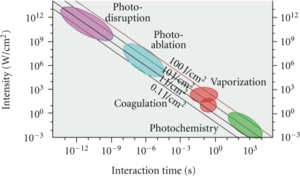I'm only a new member here and have read countless claims that LLLT does, or does not work.
In examining the research done it seems clear that there is a legitimate reaction from the human cell to light.
Everything is explained by the man himself on this website: http://photobiology.info/Hamblin.html
Now here's the kicker. If all the above is true it would mean that you would need either a badly produced standard laser diode (badly produced means a much broader spectrum than advertised), or a very expensive custom one tuned specifically to the chromophores in the body. 635, 650, and 808 are all industry standards, that's why the home lasers use these frequencies.
Since building a laser and using it myself is much cheaper than actually figuring out whether or not it works I've decided to do that. Anyone can do it and I've published the essential bill of essential materials and a place where you can buy them cheaply. I would have liked a much stronger 650/635 diode but they're not available here perhaps somebody could post a link with a website they trust.
I've been ordering off this website for a full year now, parcels keep trickling in, I've saved hundreds if not thousands on the same crap re-branded locally.
4x 808nm 300 mW Laser Diode 1.80 Euro's - LINK
4x 650nm 5mW Laser Diode 1.71 Euro's - LINK
1x LM317 stabilized voltage regulator 0-2A 1,25-28V (AKA special laser power source) 4.81 Euro's - LINK
2x Optical cable to stick in ears 1.40 Euro's - LINK
1x Multimeter for testing 7.79 Euro's - LINK
1x Arduino circuit board for programming and timing - LINK
That's it. 40,- Euro's in total. The rest like earplugs and the AC/DC power supplies you have laying around the house.
Far be it from me to say whether or not LLLT is a scam based on the main components. The truth is that if you add a fancy box and medical earphones that price will reach a few hundred and that happens to be the same price for the Lucky Laser.
To construct your laser you will have to mount the bits properly so that both the red and infrared laser are shining into one end of the cable at as shallow an angle as possible. The other side should be mounted to an earbud or placed into a foamy earplug. If that is done just turn it on, don't pulse it. The Arduino can be used to program a clock or pulses.
To test if the right amount of light is shining through to your ears keep in mind that the LLLT works with a maximum of 100mW/cm^2 so don't overdo it, you're going to want to use the multimeter to check if the laser diodes are not hogging more than twice that (both ears)
To check whether the infrared diode works point it straight at a webcam while on, it should light up quite brightly.
P.S I still need a source for powerful 635nm and 650nm laser diodes.
In examining the research done it seems clear that there is a legitimate reaction from the human cell to light.
Everything is explained by the man himself on this website: http://photobiology.info/Hamblin.html
Now here's the kicker. If all the above is true it would mean that you would need either a badly produced standard laser diode (badly produced means a much broader spectrum than advertised), or a very expensive custom one tuned specifically to the chromophores in the body. 635, 650, and 808 are all industry standards, that's why the home lasers use these frequencies.
Since building a laser and using it myself is much cheaper than actually figuring out whether or not it works I've decided to do that. Anyone can do it and I've published the essential bill of essential materials and a place where you can buy them cheaply. I would have liked a much stronger 650/635 diode but they're not available here perhaps somebody could post a link with a website they trust.
I've been ordering off this website for a full year now, parcels keep trickling in, I've saved hundreds if not thousands on the same crap re-branded locally.
4x 808nm 300 mW Laser Diode 1.80 Euro's - LINK
4x 650nm 5mW Laser Diode 1.71 Euro's - LINK
1x LM317 stabilized voltage regulator 0-2A 1,25-28V (AKA special laser power source) 4.81 Euro's - LINK
2x Optical cable to stick in ears 1.40 Euro's - LINK
1x Multimeter for testing 7.79 Euro's - LINK
1x Arduino circuit board for programming and timing - LINK
That's it. 40,- Euro's in total. The rest like earplugs and the AC/DC power supplies you have laying around the house.
Far be it from me to say whether or not LLLT is a scam based on the main components. The truth is that if you add a fancy box and medical earphones that price will reach a few hundred and that happens to be the same price for the Lucky Laser.
To construct your laser you will have to mount the bits properly so that both the red and infrared laser are shining into one end of the cable at as shallow an angle as possible. The other side should be mounted to an earbud or placed into a foamy earplug. If that is done just turn it on, don't pulse it. The Arduino can be used to program a clock or pulses.
To test if the right amount of light is shining through to your ears keep in mind that the LLLT works with a maximum of 100mW/cm^2 so don't overdo it, you're going to want to use the multimeter to check if the laser diodes are not hogging more than twice that (both ears)
To check whether the infrared diode works point it straight at a webcam while on, it should light up quite brightly.
P.S I still need a source for powerful 635nm and 650nm laser diodes.

 Member
Member

